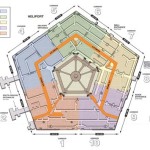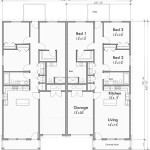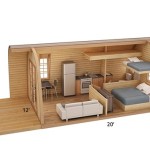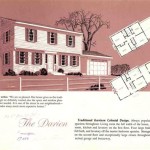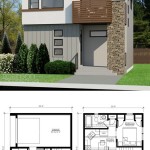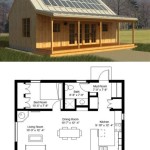Craftsman House Plans: The Allure of One-Story Living
Craftsman house plans, characterized by their emphasis on handcrafted details and a connection to nature, have remained consistently popular throughout history. When combined with the accessibility and convenience of a one-story design, these homes offer a compelling blend of aesthetic appeal and practical living. This article explores the key characteristics, benefits, and design considerations associated with one-story Craftsman house plans.
The Craftsman style, originating in the late 19th and early 20th centuries as a reaction against the mass-produced and ornate Victorian architecture, champions simplicity, functionality, and the honest expression of materials. This architectural philosophy translates beautifully into single-story homes, creating spaces that are both visually appealing and highly livable.
Defining Features of One-Story Craftsman Homes
Several defining features contribute to the distinctive character of one-story Craftsman house plans. Understanding these elements is essential for appreciating the architectural style and informing design choices.
A low-pitched roof is a hallmark of the Craftsman style. Gabled roofs, often with wide eaves that extend beyond the exterior walls, are common. These eaves provide shade and protection from the elements, while simultaneously contributing to the house's horizontal emphasis. Some designs might incorporate dormers to introduce natural light and ventilation into attic spaces, if present.
Front porches are integral to the Craftsman aesthetic, serving as both a visual focal point and a functional outdoor living space. These porches are typically supported by substantial square or tapered columns, often resting on stone or brick piers. Porch railings are typically simple and crafted from wood, further reinforcing the natural, handcrafted aesthetic.
Natural materials are favored in Craftsman construction. Wood, stone, and brick are frequently used for exterior cladding, trim, and detailing. The use of these materials not only contributes to the house's visual appeal but also connects it to its surrounding environment. Exposed rafters, brackets, and other structural elements are often intentionally left visible, showcasing the craftsmanship and construction techniques.
Windows are typically multi-paned and arranged in symmetrical or asymmetrical patterns. Double-hung windows are common, and larger picture windows may be used to maximize natural light and views. Grids in the window panes are often incorporated to reinforce the Craftsman design aesthetic.
Interior details are just as important as exterior features. Exposed beams, built-in cabinetry, and hardwood floors are common elements. Open floor plans, which promote a sense of spaciousness and connection, are often incorporated, particularly in modern interpretations of the Craftsman style. Fireplaces, typically constructed from brick or stone, serve as a focal point in living areas.
Advantages of Choosing a One-Story Craftsman House Plan
Selecting a one-story Craftsman house plan offers several practical and lifestyle advantages, making it an appealing choice for a wide range of homeowners.
One of the most significant advantages is accessibility. Single-story living eliminates the need for stairs, making it ideal for individuals with mobility limitations, families with young children, and aging homeowners who plan to age in place. This accessibility extends beyond physical mobility; it also simplifies tasks such as carrying groceries or laundry throughout the house.
One-story homes often require less maintenance than multi-story structures. Exterior painting, window cleaning, and roof repairs are typically easier and safer to perform on a single-story home. Furthermore, the absence of stairs reduces the potential for accidents and injuries.
One-story house plans often facilitate better indoor-outdoor flow. With direct access to the yard from multiple rooms, residents can easily transition between indoor and outdoor living spaces. This seamless connection to the outdoors is particularly appealing to those who enjoy gardening, entertaining, or simply relaxing in nature.
Construction costs can potentially be lower for a one-story home compared to an equivalent-sized multi-story home. This is due to simplified structural requirements and reduced need for specialized equipment and labor. However, this is not always the case, especially if the foundation requirements are extensive due to soil conditions or site topography.
Heating and cooling a one-story home can be more efficient than heating and cooling a multi-story home. Heat rises, so in a multi-story home, the upper floors tend to be warmer while the lower floors may be cooler. In a one-story home, the temperature is more evenly distributed, leading to reduced energy consumption.
Key Design Considerations for a One-Story Craftsman Home
While the advantages of one-story living are numerous, careful planning and consideration are essential to maximize the functionality and aesthetic appeal of a one-story Craftsman home.
Careful space planning is paramount. Since all living spaces are on a single level, it is crucial to optimize the layout to ensure adequate privacy and separation between different zones. Consider the placement of bedrooms, bathrooms, and living areas to create a functional and comfortable living environment. Incorporating features like walk-in closets and well-designed storage solutions can help maximize space utilization.
Natural light is crucial in a one-story home, especially in rooms located in the center of the house. Maximize natural light by incorporating large windows, skylights, and light wells. Consider the orientation of the house to take advantage of sunlight throughout the day. Light-colored walls and ceilings can also help to brighten interior spaces.
Adequate ventilation is essential for maintaining a healthy and comfortable indoor environment. Strategically placed windows and doors can promote cross-ventilation. Consider installing ceiling fans or whole-house fans to improve air circulation. Proper insulation is also important to prevent heat loss in the winter and heat gain in the summer.
Privacy is a key consideration, especially in a one-story home where all rooms are accessible from the exterior. Carefully positioning windows and doors can help to minimize visibility from the street or neighboring properties. Landscaping, such as trees and shrubs, can also provide additional privacy. Fencing or walls can be used to create private outdoor spaces.
Consider the impact of the house on the surrounding landscape. A one-story Craftsman home should blend seamlessly with its natural environment. Utilize native plants in the landscaping and consider incorporating natural elements, such as stone or wood, into the design. Minimize the disturbance to the existing topography and vegetation during construction.
Universal design principles should be incorporated to ensure that the home is accessible and adaptable to the changing needs of its occupants. This may include features such as wider doorways, grab bars in bathrooms, and lever-style door handles. Designing for accessibility not only benefits individuals with disabilities but also makes the home more comfortable and convenient for everyone.
Energy efficiency should be a priority in the design and construction of a one-story Craftsman home. Utilizing energy-efficient windows, insulation, and appliances can significantly reduce energy consumption and lower utility bills. Consider incorporating renewable energy technologies, such as solar panels, to further reduce the home's environmental impact. Proper sealing and weather stripping can also help to prevent drafts and air leaks.
Finally, ensure that the chosen house plan complies with all local building codes and regulations. Obtain all necessary permits before starting construction. Work with a qualified architect or builder who has experience in designing and constructing Craftsman-style homes. A professional can help ensure that the home is built to the highest standards of quality and safety.
These One Story Craftsman House Plans Are Full Of Southern Charm
Craftsman Style House Plans Big And Small Houseplans Blog Com
House Plan 7806 00013 Bungalow 1 199 Square Feet 3 Bedrooms 2 Bathrooms Craftsman Bungalows Plans
One Story Craftsman Home Plan 14566rk Architectural Designs House Plans
Single Story Craftsman Home Plans Blog Eplans Com
One Story Country Craftsman House Plan With Screened Porch Architectural Designs 24392tw Plans
Three Bedroom One Story Craftsman Plans
Mill Creek Cottage A One Story House Plan
One Story Craftsman Style House Plan 7069 Covington
Craftsman Style House Plans Sater Design Collection


